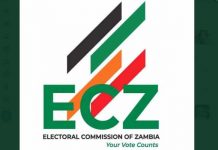All forms of media are shaped by political, economic, educational, and social conditions, but the media can help shape things as well. For example, Chiluba and the MMD trounced the ruling party and ousted Kaunda, the only leader Zambians had known in their first 27 years of independence, since Kaunda opened up the political process. One of the factors, a relatively new one at that, that helped defeat Kaunda and UNIP was the emergence of privately owned and relatively independent newspapers. The new media voices became partners with those forces that were struggling for democracy in Zambia.
The Zambia News Agency (ZANA) is the main provider of domestic news. It gathers and distributes news and information to the country’s media and works with the Pan African News Agency (PANA), which collects and redistributes news from other African countries. ZANA has not had the resources and personnel to reach its potential as the country’s domestic news agency.
In 2002 there were four newspapers in Zambia: the state-owned Zambia Daily Mail and the Times of Zambia ;
The Post , which is independent; and the UNIP-owned Sunday Times of Zambia . All are published in English and have circulations in the 25,000 to 50,000 range. Each paper also has taken advantage of technology by also publishing an online edition.
The Zambia Daily Mail started its life in 1960, when it was called the African Mail . In 1962 its name was changed to Central African Mail . This weekly paper was popular among blacks in the early 1960s because it was not afraid to publish stories that were critical of the federal government, the colonial government, and authorities in Northern and Southern Rhodesia. The paper was coowned by David Astor, then editor of the Sunday Observer in London, and Alexander Scott, a former Scottish doctor. In 1965 the new Kaunda government bought the Central African Mail . Two years later, it had become a semi-weekly called the Zambia Mail . In 1970 the Zambia Mailbecame the Zambia Daily Mail , a state-owned daily.
Its main rival was the Zambian Times , founded in 1962 by a South African named Hans Heinrich.
The Zambian Times started its life in Kitwe, one of the country’s mining centers. Heinrich, however, soon sold the paper to a British firm called London and Rhodesia Mining, which owned other newspapers in the region.
Meanwhile, the Argus Company, another owner of newspapers in Central and Southern Africa, started the Northern News in Ndola, another mining community. This newspaper, however, was aimed at the white community; it included foreign news from Britain. When Argus chose to leave Zambia to concentrate on its South African business interests, it sold the Northern Times to London and Rhodesia Mining, which shut down the Zambian Times and renamed its new property the daily Times of Zambia . A white Rhodesian civil servant, Richard Hall, became editor of the Times of Zambia . Hall trained African editors and reporters to take over from him; in 1975 Kaunda’s government took over the Times of Zambia and relocated its offices from Ndola to Lusaka, the national capital.
In addition to the Zambia Daily Mail and the Times of Zambia , other newspapers emerged. The Weekly Post became popular among those who disagreed with the Chiluba government; it regularly attacked the government, made fun of its leaders, and scrutinized its actions. It started doing to Chiluba and the MMD what Kaunda and UNIP had done to the MMD in the days before multi-party politics became a major political player. But the Weekly Post was not the only paper critical of the new government. The church-owned National Mirror and the privately owned Sun were also critical. They regularly ran stories and columns ridiculing the new government and its leaders, something that could not have happened during the Kaunda days.
The Daily Mail and the Times of Zambia did for Chiluba what they used to do for Kaunda: defend the government from attacks in the private media. They have remained pro-government publications, again projecting the viewpoint of the government of the day. They have refused to open up their pages to opposition’s views. Although sometimes irritated by some of the coverage, the Chiluba government and its successor, the Mwanawasa government, were far more tolerant of criticism. They also eschewed censorship, even when the media published articles and photos that some consider of questionable taste. Ironically, some of the tactics that the MMD used to discredit the UNIP government were used against it. In the 1990s, the MMD published ads in the independent media attacking the UNIP government and its policies. Opposition parties used the same ad tactics against the MMD.
Read more: http://www.pressreference.com/Uz-Z/Zambia.html#ixzz3JhoaUe7L

 JOIN DRIVERN TAXI AS PARTNER DRIVER TODAY!
JOIN DRIVERN TAXI AS PARTNER DRIVER TODAY!











